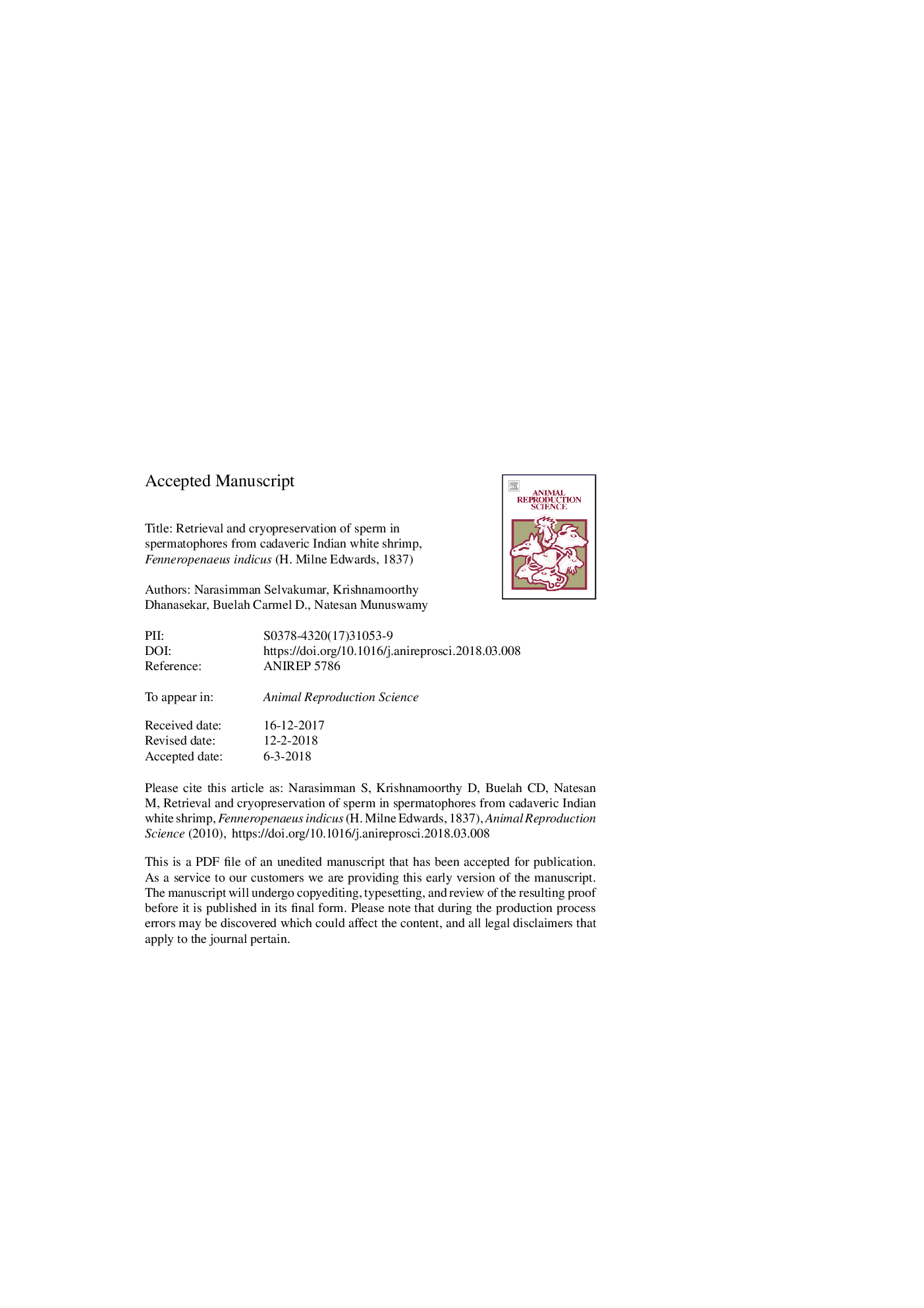| Article ID | Journal | Published Year | Pages | File Type |
|---|---|---|---|---|
| 8403963 | Animal Reproduction Science | 2018 | 27 Pages |
Abstract
This study focused on the quality of sperm obtained from spermatophores of cadaveric shrimp after long-term storage. Spermatophores were collected using the stripping method, which has resulted in maximum sperm viability when this approach was previously used. Cryoprotectants toxicity assessment of samples was conducted using dimethyl sulfoxide (DMSO), methanol (MeOH), ethylene glycol (EG), glycerol (Gly), dimethyl acetamide (DMA) and propylene glycol (PG) at different concentrations (5%, 10% and 30% v/v), prepared in Ca-F saline. Based on the results from the cryoprotectant toxicity assay, DMSO and MeOH were used individually as well as in combination for the subsequent study. Samples along with cryoprotectants were subjected to slow and fast freezing protocols (i.e. â0.5, and â10â¯Â°C/min to a final temperature of â80â¯Â°C) and were subsequently stored in LN2 (196â¯Â°C). Similarly, vitrification was performed by plunging the samples directly in to LN2. Samples of control and cryopreserved spermatophores that were stored for 45 days had sperm viabilities of 91.4â¯Â±â¯3.6% and 53.9â¯Â±â¯4.7%, respectively. Further observations with HOST and DNA integrity analyses of the cryopreserved sperm, resulted in percentages of 45.6â¯Â±â¯4.2%; 58.1â¯Â±â¯1.7% compared to control values of 82.3â¯Â±â¯4.8%; 94.3â¯Â±â¯1.9%, respectively. Use of the one-step slow freezing protocol at the rate of -0.5â¯Â°C/min between 4â¯Â°C and â80â¯Â°C in LN2 with DMSO (5%)â¯+â¯MeOH (5%) was a desirable preservation strategy of spermatophores, compared to other freezing protocols. Unlike sperm viability, the HOST results affirm the fertility potential of the sperm that have the capacity to participate in the fertilization process. Thus, the results of this study demonstrate that long term storage of sperm in spermatophores of Fenneropenaeus indicus collected from cadaveric specimens can result in viable sperm after cryopreservation if extender (Ca-F saline) containing DMSO and MeOH are used.
Related Topics
Life Sciences
Agricultural and Biological Sciences
Animal Science and Zoology
Authors
Narasimman Selvakumar, Krishnamoorthy Dhanasekar, D. Buelah Carmel, Natesan Munuswamy,
